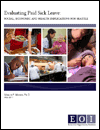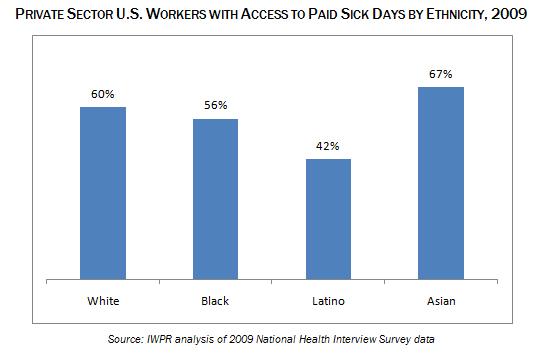From the report Evaluating Paid Sick Leave
Part 1 | 2 | 3 | 4 | 5 | 6 | 7 | 8 | 9 |10
Nationally, over 80% of people who earn above the median hourly wage get paid sick leave, while only 19% do among the bottom 10% of earners. In addition to the short term financial losses from taking unpaid leave, people without sick leave lose opportunities for career advancement, and are limited in their ability to build assets, retirement savings, and longer term economic security.
People who work part time frequently do not qualify for paid leave and other benefits that are provided to full-time employees. Women are far more likely than men to work part time, often for family reasons.
According to national data, Latino and African-American workers are less likely than whites and Asians to have paid sick leave.
A 2010 survey of workers in San Francisco found that Latino and African American workers were more likely than white workers to report benefiting from that city’s paid sick days ordinance – by having more paid sick time available, their employers being more supportive of them taking time off, and/or being better able to care for health needs of themselves or family members.
More To Read
April 17, 2024
2023-24 Impact and Gratitude Report
Reflecting on a year of progress and transition at EOI
April 12, 2024
Welcoming our New Executive Director, Rian Watt!
EOI is excited to begin its next chapter under new leadership
April 4, 2024
Is There a Valid Argument Against Cost-Free College in Washington?
Cost-free college is a meaningful investment that would change lives. What's stopping Washington from making it happen?



